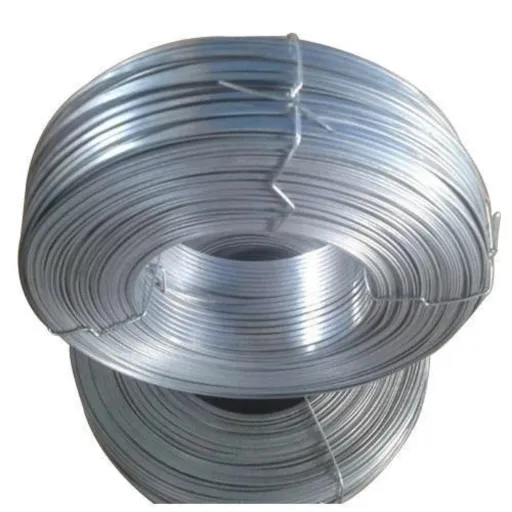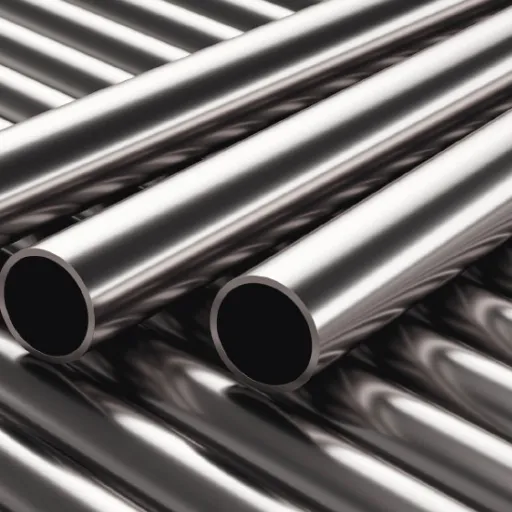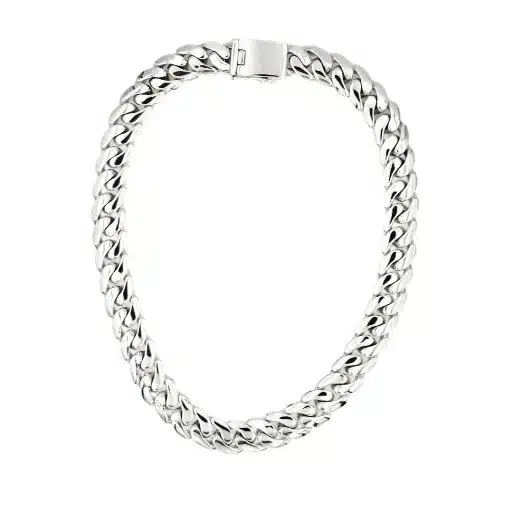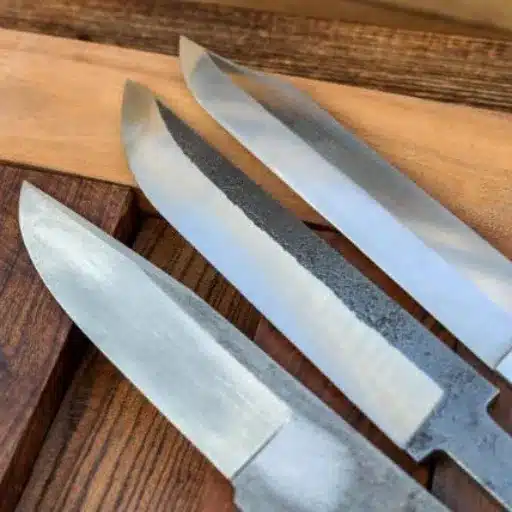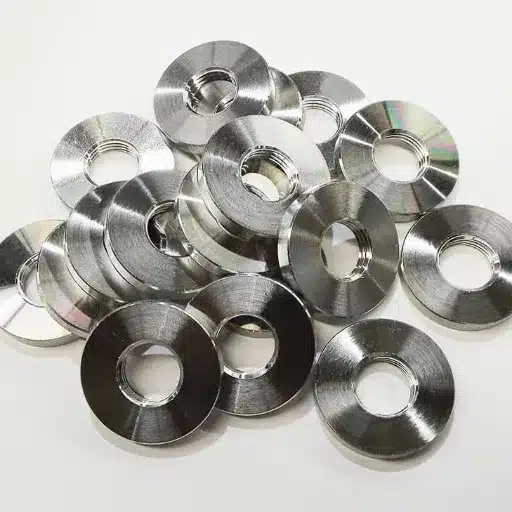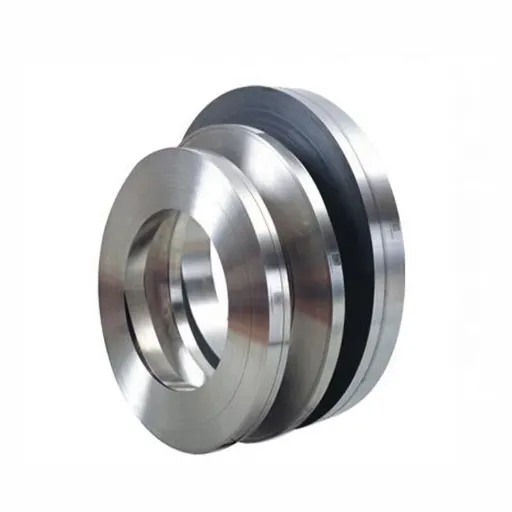Working with materials for industrial and high-performance applications is often about understanding the unusual properties and advantages of each. Grade 422 stainless steel and carbon materials are two of the most common types, famous for their strength, high durability, and flexibility. So, what distinguishes one from the other, and which one would be more suited for your requirements? This blog analyses the key aspects of these two materials, including their composition, benefits, and appropriate application. So, whether making a well-informed choice for your next project or wishing to just increase your knowledge of basic engineering components, this piece aims to equip you with useful information. So follow along with us to find out what makes Grade 422 stainless steel and carbon materials a worldwide flourishing industry.
Introduction to Grade 422 Stainless Steel
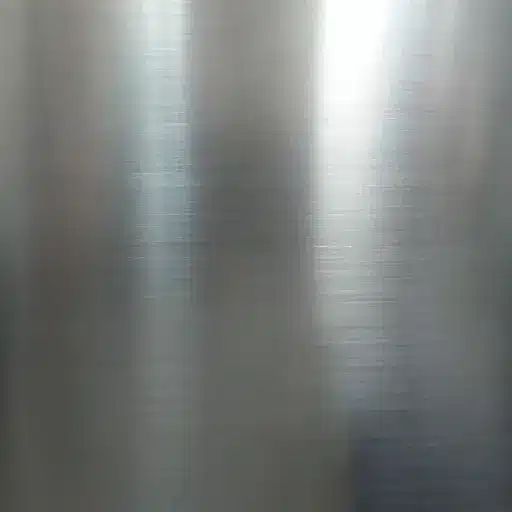
This Grade 422 stainless steel is martensitic nature and offers excellent strength, heat, and corrosion resistance. Its robust nature makes it unyielding against extreme temperatures found in turbine blades, automobile parts, and steam compressors.
What Is Grade 422 Stainless Steel?
Grade 422 stainless steel is a martensitic stainless steel intended for applications where high strength, scaling resistance, and excellent mechanical properties at an elevated temperature are required. Having chromium content of approx 11-13% and other alloying elements like molybdenum, vanadium, and manganese, it ensures high corrosion resistance while still remaining tough under an environment of intense temperature. It is suitably used in environments exposed to stress and heat, such as turbine blades, high-temperature bolts, and aerospace and power generation components.
Key Performance Metrics:
- Tensile Strength: Regularly exceeds 725 MPa
- Temperature Resistance: Up to 1200°F (649°C)
- Chromium Content: 11-13%
- Enhanced Elements: Molybdenum and Vanadium for heat resistance
It has a reputation for a tensile strength that regularly exceeds 725 MPa and an ability to retain hardness even at elevated temperatures of up to 1200°F (649°C). The presence of molybdenum and vanadium gives it its excellent heat resistance; the presence of these elements also contributes to improved wear resistance and durability. It is extensively supplied in the quenched and tempered condition, which further enhances its fatigue resistance and microstructural stability.
Industrial applications of Grade 422 stainless steel typically require heat resistance coupled with structural integrity. Unfortunately, its machining ability and welding ability require careful and precise control because of very high hardness and strength. Proper use of this steel in an application would improve the operational efficiency of the engineering application and extend its life considerably.
History and Development of Grade 422
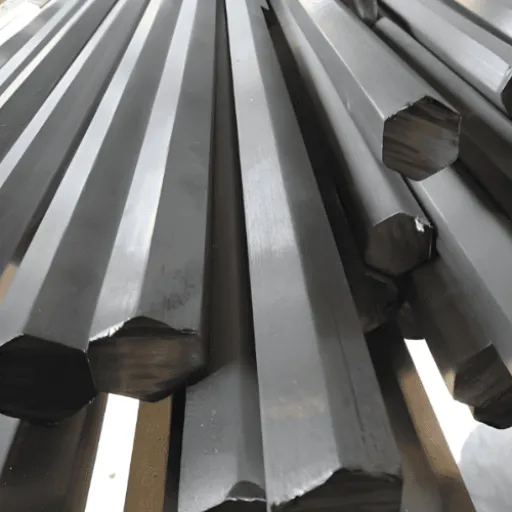
Grade 422 stainless steel originated in the mid-20th century as metallurgical advancements spurred the design of several types of high-strength, high-temperature alloys that meet the needs of highly demanding industries. It was originally designed for turbine components and other high-temperature environments; however, Grade 422 was engineered to address the growing need for materials that can withstand elevated temperatures while maintaining their structural integrity.
Core Composition Elements:
In its essence, this martensitic stainless steel is a high-temperature grade, composed mostly of iron, chromium (typically 11-13%), and molybdenum (1%), with trace elemental silicon, manganese, and nickel for enhanced high-temperature performance and improved oxidation resistance.
Its introduction was therefore a great step toward truly fulfilling the material needs of aerospace turbine, power generation, and petrochemical processing. More recent processing technological advances relating to vacuum melting and optimum heat treatment have provided further refinements in the metallurgical consistency of Grade 422. They have, therefore, minimized inclusions and maximized mechanical properties, guaranteeing stable performance even where operating temperature is stated to be in excess of 1200°F (around 649°C). Modern uses have extended application in steam turbine, jet engine, and critical industrial components. The design of the construction alloy revealed another application-driven emphasis on performance enhancement, keeping up with newer demands of high-stress engineering fields.
Properties of Grade 422 Stainless Steel
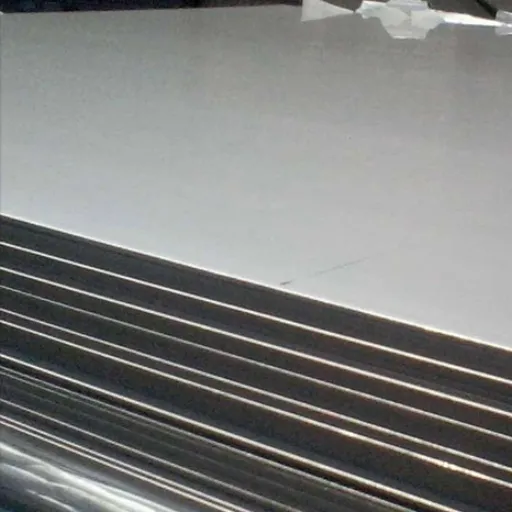
Chemical Composition of Grade 422 Stainless Steel
Grade 422 stainless steel is a martensitic-type stainless steel with a carefully balanced chemical composition designed for high-temperature strength and corrosion resistance. The chemical composition of Grade 422 stainless steel is typically as follows:
| Element | Symbol | Percentage Range |
|---|---|---|
| Carbon | C | 0.20–0.25% |
| Chromium | Cr | 11.50–13.50% |
| Nickel | Ni | 0.50–1.00% |
| Manganese | Mn | 1.00% maximum |
| Silicon | Si | 1.00% maximum |
| Phosphorus | P | 0.04% maximum |
| Sulfur | S | 0.03% maximum |
| Molybdenum | Mo | 0.90–1.20% |
| Vanadium | V | 0.20–0.50% |
This unique constitution imparts to the alloy good mechanical properties thermal scaling resistance, thermo stability, and durability in high-stress environments. Chromium and molybdenum provide corrosion resistance, while carbon and vanadium contribute to enhanced strength and hardness. Hence, 422 stainless steel is preferred in the aerospace and power generation industry for special applications.
Corrosion Resistance
Grade 422 stainless steel shows moderate corrosion resistance, like other martensitic stainless steels. It is excellent in mildly corrosive environments. The stainless steel usually contains 11.5 to 13.5% chromium, which creates a protective oxide layer on the surface, thus preventing significant degradation with time. In certain scenarios, however, the corrosion resistance of this type of steel is found wanting; severely acidic environments, very energetic marine atmospheres for instance, can attack the passive layer and cause metal dissolution far faster than one would truly wish.
Enhancement Methods:
- Passivation treatments
- Nitriding methods
- Surface coatings
- Controlled temperature operation
According to very recent industrial trends, the corrosion resistance of Grade 422 stainless steel can also be improved by several surface treatments or surface modifications, such as by passivation or nitriding methods. Furthermore, the brief exposure or operation of the 422 stainless steel in its specified temperature limits results in the least breakdown of its protective oxide layer from that provided by the chromium content.
Combination undergirding moderate corrosion resistance with excellent strength at elevated temperatures will always warrant the use of Grade 422 stainless steel in many controlled environments as turbine blades and fasteners. Long-term service in aggressive environments should be through the use of surface coatings or implantation with a more corrosion-resistant alloy.
Comparisons with Other Stainless Steel Grades
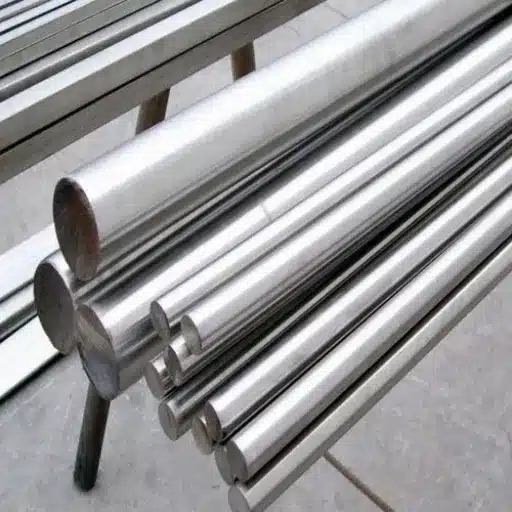
Grade 422 stainless steel thus finds a unique niche in the performance scale of stainless steel grades when employed at higher temperatures and stresses. Its martensitic constitution with additional alloying elements such as molybdenum, chromium, and vanadium largely contributes to creep strength and resistance to oxidation.
Grade 422 vs. Grade 304
Being austenitic stainless steel, Grade 304 is known for its excellent corrosion resistance and general utility. It cannot, however, be used for high temperature or long mechanical stresses. Although Grade 304 cannot undergo the higher temperatures of even 870°F (466°C) for much long period of time, Grade 422, withstanding temperatures between 1200°F and 1250°F (648°C and 677°C), can easily resist mechanical degradations.
Grade 422 vs. Grade 316
Ranked among the most widely used austenitic stainless steel types, Grade 316 is often selected because of its enhanced corrosion resistance because of molybdenum addition. But like Grade 304, it cannot resist temperatures higher than about 800°F – 930°F (427°C – 500°C), and hence cannot compete with Grade 422 in high-temperature applications.
Grade 422 vs. Grade 410
Due to its chromium and molybdenum contents, Grade 422 gives a better mechanical property and creep resistance than Grade 410, yet another martensitic stainless steel. While Grade 410 can work at maximum temperatures up to 1200°F (648°C), Grade 410’s mechanical stability deteriorates rapidly under cyclic thermal conditions.
Advantageous during the Manufacturing Processes
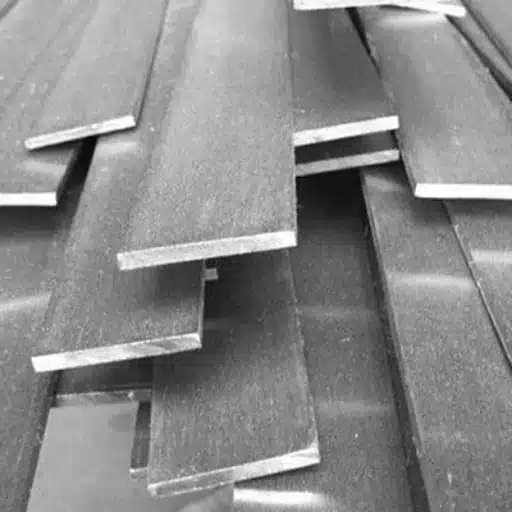
During the manufacturing processes, Grade 422 stainless steel provides a unique combination of properties that allow it to be a highly versatile and efficient material used in industrial environments. One of the particular advantages is the higher degree of machinability of the Grade 422 stainless steel compared to other martensitic stainless steels. Its controlled chemical composition allows easier chip control with better surface finishes during machining, thus reducing tool wear and enhancing productivity.
Thermal Stability
Excellent for manufacturing processes subject to prolonged exposure to relatively high temperatures with superior creep strength resistance.
Forging & Heat Treatment
Consistent performance during forging with reduced cracking or deformation risks in heat treatment processes.
Besides, Grade 422 is very thermally stable and is excellent for manufacturing processes subject to prolonged exposure to relatively high temperatures. Grade 422’s high creep strength gives it high resistance against deformation so that its components resist any degradation under a combination of stresses that are thermal and mechanical. Furthermore, Grade 422 serves well during forging and heat treatment in behaviors such as giving consistent performs and reducing cracking or deformation.
Research-Backed Performance:
The data shows the great demand posed for high-strength materials such as Grade 422 and its sister grades by sectors like aerospace, power generation, and automotive. For example, grade 422 materials have been proven through research to operate in turbine blades and high-pressure valves at temperatures upwards of 1250°F (677°C) but with durability for a long service life.
This ensures the proper running and consequently lower down on maintenance costs, which is paramount in manufacturers’ persecutions toward economic feasibility.
Benefits of Using Grade 422 Stainless Steel
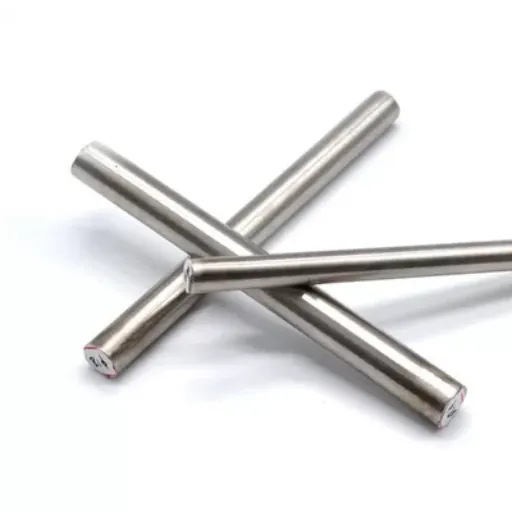
The use of Grade 422 stainless steel offers a range of benefits, which notably include its exceptional strength at high temperatures and consequently, increasing the service life of components while minimizing maintenance costs. This is the most economical option for highly demanding applications, especially in the aerospace and power-generation industries, where reliability and cost-efficiency are of utmost importance.
Performance Advantages of Grade 422 Stainless Steel
Grade 422 stainless steel is appreciated for its extraordinary performance characteristics in harsh environments. This martensitic stainless steel is designed for applications demanding very high strength and wear resistance at high temperature. Somewhere in the realms between 850MPa and 1,070MPa tensile strength with a yield strength of approximately 650MPa, it provides robust structural integrity, which is almost always required in aerospace, power generation, and automotive industries.
Tensile Strength
850-1,070
MPa
Yield Strength
≈650
MPa
Max Temperature
1200°F
(650°C)
Highest-grade hardness, retained at temperatures as high as 1200°F (650°C), is available from Grade 422 for parts such as turbine blades, high-pressure vessels, and any other parts exposed to extreme heat. Further heat treatment can be applied to optimize hardness for specific applications.
In corrosion resistance, it fairs well, offering protection against oxidation and pitting in accepted operating conditions. Unlike steels, it has less scaling at elevated temperatures and thus requires low-level maintenance and a longer life span. According to reports, thermal fatigue resistance aided by dimensional stability has proven it to be highly suitable for cyclic and dynamic load applications.
With mach inability heating, Grade 422 enhances annealing, allowing finer tolerances with lower tool wear, a welcomed feature where precision counts. Be it for jet engine components or high-precision industrial tools, the performance merits of Grade 422 stainless steel are well established as one of the best-performing materials.
Cost-Effectiveness Over Time
Considering the material of choice over an extended time, it is obvious that Grade 422 stainless steel is the cost-effective option. However, such value comes at a relatively higher initial cost when compared with standard-grade alternatives. Enhanced durability of the alloy, resistance to extreme conditions, and reduced instances of repairs are what makes this Grade 422 variant worth considering in application.
Industry Performance Data:
- ✓
Operational Lifespan: Up to 25-50% extension in demanding applications - ✓
Downtime Reduction: 15% annual downtime reduction in turbine applications (2023 study) - ✓
Manufacturing Costs: ~10% reduction in operational costs due to decreased tool wear
According to industry reports, materials with high resistance to wear and corrosion such as Grade 422 can extend operational lifespans by up to 25-50% in demanding applications. In the energy sector, however, a 2023 study by a prestigious industrial research publication illustrates that, gratefully, the Grade 422 components in turbines have helped reduce annual downtime by 15%.
Hence, such reductions, combined with maintenance costs, do indeed contribute to their favor by industries with future efficiency in mind. According to recent engineering analyses, it also has the advantage of reduced manufacturing costs, with decreased tool wear capable of cutting operational costs by roughly 10%.
Reference Sources
-
Metal Zenith:
- Title: “422 Stainless Steel: Properties and Key Applications”
- URL: metalzenith.com
- Why Reliable: This source provides a comprehensive overview of the chemical composition, mechanical properties, and typical applications of 422 stainless steel, making it a valuable reference for understanding its feasibility in high-stress and high-temperature environments.
-
Universal Stainless:
- Title: “Grade 422 Stainless Steel”
- URL: univstainless.com
- Why Reliable: This source highlights the specifications, industry applications, and performance characteristics of 422 stainless steel, particularly in aerospace and power generation sectors, ensuring its credibility for technical validation.
-
AZoM – The A to Z of Materials:
- Title: “Stainless Steel – Grade 422 (UNS S42200)”
- URL: azom.com
- Why Reliable: AZoM is a well-known platform for material science, offering detailed insights into the properties, fabrication, and applications of Grade 422 stainless steel, making it a trusted source for technical and industrial information.
Frequently Asked Questions (FAQs)
Is Grade 422 comparable to other higher-level stainless steel grades?
Due to its singular qualities, Grade 422 has often been considered of the same caliber as higher level stainless steel grades. Though the upper grades might exhibit better performance in extreme environments, the 422 is very much capable of providing a suitable balance of strength and corrosion resistance for many applications.
What kind of equipment do you need for working with Grade 422?
Working with Grade 422 requires some equipment for handling and working it. This equipment might include metal-cutting tools, welding equipment able to weld stainless steel, and inspection equipment for quality control and compliance check concerning the applicable standards.
What changes can be done on Grade 422 during manufacturing?
Such changes may be undertaken on Grade 422 during manufacturing for better performance, like heat treatment to improve hardness or change in raw material composition to get the desired mechanical behavior.
How thin can Grade 422 components be made?
The minimum thickness of parts from Grade 422 depends on the application and functional requirements. It is, however, generally considered best to conform to the existing industry norms and guidelines so that the components fulfill the required strength and performance criteria.
What is the highest grade the application of Grade 422 can achieve?
Though still high in quality, the term “highest grade” differs depending on the application in question. Evaluation of specific project needs is critical, as arraying treatments or grades in conjunction with each other may excel on a higher level in a very specific environment.

